|
|
|
|
ELIZABETH I, Queen of England and Ireland, born on Sunday the 7th of September 1533, and, like all the Tudors except Henry VII, at Greenwich Palace, was the only surviving child of Henry VIII by his second queen, Anne Boleyn. With such a mother and with Cranmer as her godfather she represented from her birth the principle of revolt from Rome, but the opponents of that movement attached little importance to her advent into the world. Charles V's ambassador, Chapuys, hardly deigned to mention the fact that the king's amie had given birth to a daughter, and both her parents were bitterly disappointed with her sex. She was, however, given precedence over Mary, her elder sister by sixteen years, and Mary never forgave the infant's offence. Even this dubious advantage only lasted three years until Elizabeth's mother was beheaded.
Elizabeth thus lost all hereditary title to the throne, and her early years of childhood can hardly have been happier than Mary's. Nor was her legitimacy ever legally established; but after Jane Seymour's death, when Henry seemed likely to have no further issue, she was by act of parliament [Act of Succession, 1544] placed next in order of the succession after Edward and Mary and their issue; and this statutory arrangement was confirmed by the will which Henry VIII was empowered by statute to make. Queen Catherine Parr introduced some humanity into Henry's household, and Edward and Elizabeth were well and happily educated together, principally at old Hatfield House.
They were there when Henry's death called Edward VI away to greater dignities, and Elizabeth was left in the care of Catherine Parr, who married in indecent haste Thomas, Lord Seymour, brother of the protector Somerset. This unprincipled adventurer, even before Catherine's death in September 1548, paid indelicate attentions to Elizabeth. Any attempt to marry her without the council's leave would have been treason on his part and would have deprived Elizabeth of her contingent right to the succession. Accordingly, when Seymour's other misbehaviour led to his arrest, his relations with Elizabeth were made the subject of a very trying investigation, which gave Elizabeth her first lessons in the arts of self-defence. She proved equal to the occasion, partly because she was in all probability innocent of anything worse than a qualified acquiescence in Seymour's improprieties and a girlish admiration for his handsome face. He or his tragic fate may have touched a deeper chord, but it was carefully concealed.
For the rest of Edward's reign Elizabeth's life was less tempestuous. She hardly rivalled Lady Jane Grey as the ideal Puritan maiden, but she swam with the stream, and was regarded as a foil to her stubborn Catholic sister. She thus avoided the enmity and the still more dangerous favour of Northumberland; and some unknown history lies behind the duke's preference of the Lady Jane to Elizabeth as his son's wife and his own puppet for the throne. She thus escaped shipwreck in his crazy vessel, and rode by Mary's side in triumph into London on the failure of the plot. For a time she was safe enough; she would not renounce her Protestantism until Catholicism had been made the law of the land, but she followed Gardiner's advice to her father when he said it was better that he should make the law his will than try to make his will the law.
It was not so much Elizabeth's religion as her nearness to the throne and the circumstances of her birth that endangered her life in Mary's reign. While Mary was popular Elizabeth was safe; but as soon as the Spanish marriage project had turned away English hearts Elizabeth inevitably became the centre of plots and the hope of the plotters. Had not Lady Jane still been alive to take off the edge of Mary's indignation and suspicion Elizabeth might have paid forfeit for Wyat's rebellion with her life instead of imprisonment. She may have had interviews with French agents who helped to foment the insurrection; but she was strong and wary enough to avoid Henry II's toils; for even in case of success she would have been the French king's puppet, placed on the throne, if at all, merely to keep it warm for Henry's prospective daughter-in-law, Mary Stuart. This did not make Mary Tudor any more friendly, and the Spaniards cried loud and long for Elizabeth's execution.
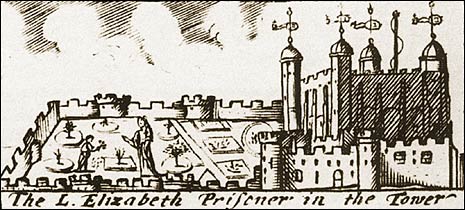
She was sent to the Tower in March 1554, but few Englishmen were fanatic enough to want a Tudor beheaded. The great nobles, the Howards, and Gardiner would not hear of such a proposal; and all the efforts of the court throughout Mary's reign failed to induce parliament to listen to the suggestion that Elizabeth should be deprived of her legal right to the succession. After two months in the Tower she was transferred to Sir Henry Bedingfield's charge at Woodstock, and at Christmas, when the realm had been reconciled to Rome and Mary was expecting issue, Elizabeth was once more received at court. In the autumn of 1555 she went down to Hatfield, where she spent most of the rest of Mary's reign, enjoying the lessons of Ascham, and planting trees which still survive.
She had only to bide her time while Mary made straight her successor's path by uprooting whatever affection the English people had for the Catholic faith, Roman jurisdiction and Spanish control. The Protestant martyrs and Calais between them removed all the alternatives to an insular national English policy in church and in state; and no sovereign was better qualified to lead such a cause than the queen who ascended the throne amid universal, and the Spaniards thought indecent, rejoicings at Mary's death on the 17th of November 1558. "Mere English" she boasted of being, and after Englishmen's recent experience there was no surer title to popular favour. No sovereign since Harold had been so purely English in blood; her nearest foreign ancestor was Catherine of France, the widow of Henry V, and no English king or queen was more superbly insular in character or in policy.
She was the unmistakable child of the age so far as Englishmen shared in its characteristics, for with her English aims she combined some Italian methods and ideas. "An Englishman Italianate," ran the current jingle, "is a devil incarnate," and Elizabeth was well versed in Italian scholarship and statecraft. It is clear enough that, although, like her father, she was fond of ritual, she was absolutely devoid of the religious temperament, and that her ecclesiastical preferences were dictated by political considerations. She was sincere enough in her dislike of Roman jurisdiction and of Calvinism; a daughter of Anne Boleyn could have little affection for a system which made her a bastard, and all monarchs agreed at heart with James I's aphorism about "no bishop, no king." It was convenient, too, to profess Lutheran sympathies, for Lutheranism was now an established, monarchical and comparatively respectable religion, very different from the Calvinism against which monarchs directed the Counter-reformation from political motives. Lutheran dogma, however, had few adherents in England, though its political theory coincided with that of Anglicanism in the 16th century. The compromise that resulted from these conflicting forces suited Elizabeth very well; she had little dislike of Catholics who repudiated the papacy, but she was forced to rely mainly on Protestants, and had little respect for any form of ecclesiastical self-government. She valued uniformity in religion, not as a safeguard against heresy, but as a guarantee of the unity of the state.
The outlines of her foreign policy are sketched elsewhere, and her courtships were diplomatic. Contemporary gossip said that she was debarred from matrimony by a physical defect; and her cry when she heard that Mary queen of Scots had given birth to a son is the most womanly thing recorded of Elizabeth. Her features were as handsome as Mary's, but she had little fascination, and in spite of her many suitors no man lost his head over Elizabeth as men did over Mary. She was far too 'masculine' in mind and temperament, and her extravagant addiction to the outward trappings of femininity was probably due to the absence or atrophy of deeper feminine instincts. In the same way the impossibility of marriage made her all the freer with her flirtations, and she carried some of them to lengths that scandalized a public unconscious of Elizabeth's security. She had every reason to keep them in the dark, and to convince other courts that she could and would marry if the provocation were sufficient. She could not marry Philip II, but she held out hopes to more than one of his Austrian cousins whenever France or Mary Stuart seemed to threaten; and later she encouraged two French princes when Philip had lost patience with Elizabeth and made Mary Stuart his protegee. Her other suitors were less important, except Leicester, who appealed to the least intellectual side of Elizabeth and was always a cause of distraction in her policy and her ministers.
| | 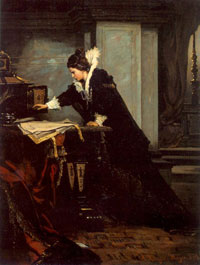
Alexander von Liezen-Mayer.
Queen Elizabeth signing the Death
Warrant of Mary, Queen of Scots.
|
Elizabeth was terribly handicapped by having no heirs of her body and no obvious English successor. She could not afford to recognize Mary's claim, for that would have been to alienate the Protestants, double the number of Catholics, and, in her own phrase, to spread a winding-sheet before her eyes; for all would have turned to the rising sun. Mary was dangerous enough as it was, and no one would willingly make his rival his heir. Elizabeth could hardly be expected to go out of her way and ask parliament to repeal its own acts for Mary's sake; probably it would have refused. Nor was it personal enmity on Elizabeth's part that brought Mary to the block. Parliament had long been ferociously demanding Mary's execution, not because she was guilty but because she was dangerous to the public peace. She alone could have given the Spanish Armada any real chance of success; and as the prospect of invasion loomed larger on the horizon, fiercer grew the popular determination to remove the only possible centre of a domestic rising, without which the external attack was bound to be a failure. Elizabeth resisted the demand, not from compassion or qualms of conscience, but because she dreaded the responsibility for Mary's death. She wished Paulet would manage the business on his own account, and when at last her signature was extorted she made a scapegoat of her secretary Davison who had the warrant executed.
The other great difficulty, apart from the succession, with which Elizabeth had to deal, arose from the exuberant aggressiveness of England, which she could not, and perhaps did not want to, repress. Religion was not really the cause of her external dangers, for the time had passed for crusades, and no foreign power seriously contemplated an armed invasion of England for religion's sake. But no state could long tolerate the affronts which English seamen offered Spain. The common view that the British Empire has been won by purely defensive action is not tenable, and from the beginning of her reign Englishmen had taken the offensive, partly from religious but also from other motives. They were determined to break up the Spanish monopoly in the new world, and in the pursuit of this endeavour they were led to challenge Spain in the old. For nearly thirty years Philip put up with the capture of his treasure-ships, the raiding of his colonies and the open assistance rendered to his rebels. Only when he had reached the conclusion that his power would never be secure in the Netherlands or the New World until England was conquered, did he despatch the Spanish Armada. Elizabeth delayed the breach as long as she could, probably because she knew that war meant taxation, and that taxation was the most prolific parent of revolt.
With the defeat of the Spanish Armada Elizabeth's work was done, and during the last fifteen years of her reign she got more out of touch with her people. That period was one of gradual transition to the conditions of Stuart times; during it practically every claim was put forward that was made under the first two Stuarts either on behalf of parliament or the prerogative, and Elizabeth's attitude towards the Puritans was hardly distinguishable from James I's. But her past was in her favour, and so were her sex and her Tudor tact, which checked the growth of discontent and made Essex's rebellion a ridiculous fiasco. He was the last and the most wilful but perhaps the best of her favourites, and his tragic fate deepened the gloom of her closing years. The loneliness of a queen who had no husband or children and no relatives to mention must at all times have been oppressive; it grew desolating in old age after the deaths of Leicester, Walsingham, Burghley and Essex, and Elizabeth died, the last of her race, on the 24th of March 1603.
Excerpted from:
Encyclopedia Britannica, 11th Ed., Vol IX.
Cambridge: Cambridge University Press, 1910. 283.
 |
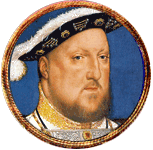
Father
Henry VIII |

Mother
Anne Boleyn |
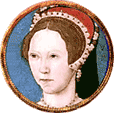
Sister
Mary I |
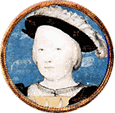
Brother
Edward VI |
 |
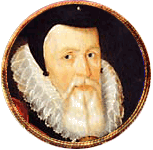
William Cecil
Lord Burghley |

Sir Francis
Walsingham |

Sir Nicholas
Bacon |

Sir Robert
Cecil |
 |
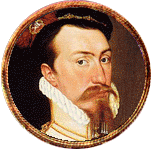
Robert Dudley,
Earl of Leicester |

Robert Devereux,
Earl of Essex | 
Edward de Vere,
Earl of Oxford |

Sir Walter Ralegh |
 | to Queen Elizabeth Main |
Site copyright ©1996-2020 Anniina Jokinen. All Rights Reserved.
This page created on August 10, 2006. Last updated on July 6, 2020.
|
|
Elizabethan Encyclopedia Entries:
The Act of Supremacy, 1559
Articles Touching Preachers, 1583
William Cecil, Lord Burghley
Robert Cecil, 1st Earl of Salisbury
Sir Francis Walsingham
Sir Nicholas Bacon
Sir Thomas Bromley
Robert Dudley, Earl of Leicester
Ambrose Dudley, Earl of Warwick
Henry Carey, Lord Hunsdon
Sir Thomas Egerton, Viscount Brackley
Sir Francis Knollys
Katherine "Kat" Ashley
Lettice Knollys, Countess of Leicester
George Talbot, 6. E. of Shrewsbury
Elizabeth, Countess of Shrewsbury
Gilbert Talbot, 7. E. of Shrewsbury
Sir Henry Sidney
Sir Robert Sidney
Archbishop Matthew Parker
Walter Devereux, 1st Earl of Essex
Robert Devereux, 2nd Earl of Essex
Penelope Devereux, Lady Rich
Sir Christopher Hatton
Edward Courtenay, E. Devonshire
Edward Manners, 3rd Earl of Rutland
Thomas Radcliffe, 3. Earl of Sussex
Henry Radcliffe, 4. Earl of Sussex
Robert Radcliffe, 5. Earl of Sussex
William Parr, Marquis of Northampton
Henry Wriothesley, 2. Southampton
Henry Wriothesley, 3. Southampton
Charles Neville, 6. E. Westmorland
Thomas Percy, 7. E. Northumberland
Henry Percy, 8. E. Northumberland
Henry Percy, 9. E. Nothumberland
William Herbert, 1. Earl of Pembroke
Thomas Howard, 4th Duke of Norfolk
Charles, Lord Howard of Effingham
Thomas Howard, 1. Earl of Suffolk
Henry Hastings, 3. E. of Huntingdon
Edward Manners, 3rd Earl of Rutland
Roger Manners, 5th Earl of Rutland
Francis Manners, 6th Earl of Rutland
Henry FitzAlan, 12. Earl of Arundel
Thomas, Earl Arundell of Wardour
Edward Somerset, E. of Worcester
William Davison
Sir Walter Mildmay
Sir Ralph Sadler
Sir Amyas Paulet
Gilbert Gifford
François, Duke of Alençon & Anjou
Mary, Queen of Scots
Henry Stuart, Lord Darnley
James Hepburn, Earl of Bothwell
Anthony Babington and Babington Plot
John Knox
Philip II of Spain
The Spanish Armada, 1588
Sir Francis Drake
Sir John Hawkins
William Camden
Archbishop Whitgift
Martin Marprelate Controversy
John Penry (Martin Marprelate)
Richard Bancroft, Archbishop of Canterbury
John Dee, Alchemist
Philip Henslowe
Edward Alleyn
The Blackfriars Theatre
The Fortune Theatre
The Rose Theatre
The Swan Theatre
Children's Companies
The Admiral's Men
The Lord Chamberlain's Men
Citizen Comedy
The Isle of Dogs, 1597
Common Law
Court of Common Pleas
Court of King's Bench
Court of Star Chamber
Council of the North
Fleet Prison
Assize
Attainder
Oyer and terminer
Praemunire
King James VI & I
Greenwich Palace
Hatfield House
Richmond Palace
Windsor Palace
Woodstock Manor
The Cinque Ports
Mermaid Tavern
Merchant Taylors' School
Westminster School
Images:
Map of England from Saxton's Descriptio Angliae, 1579
Location Map of Elizabethan London
Plan of the Bankside, Southwark, in Shakespeare's time
Detail of Norden's Map of the Bankside, 1593
Bull and Bear Baiting Rings from the Agas Map (1569-1590, pub. 1631)
Sketch of the Swan Theatre, c. 1596
Westminster in the Seventeenth Century, by Hollar
Visscher's Panoramic View of London, 1616. COLOR
|
|